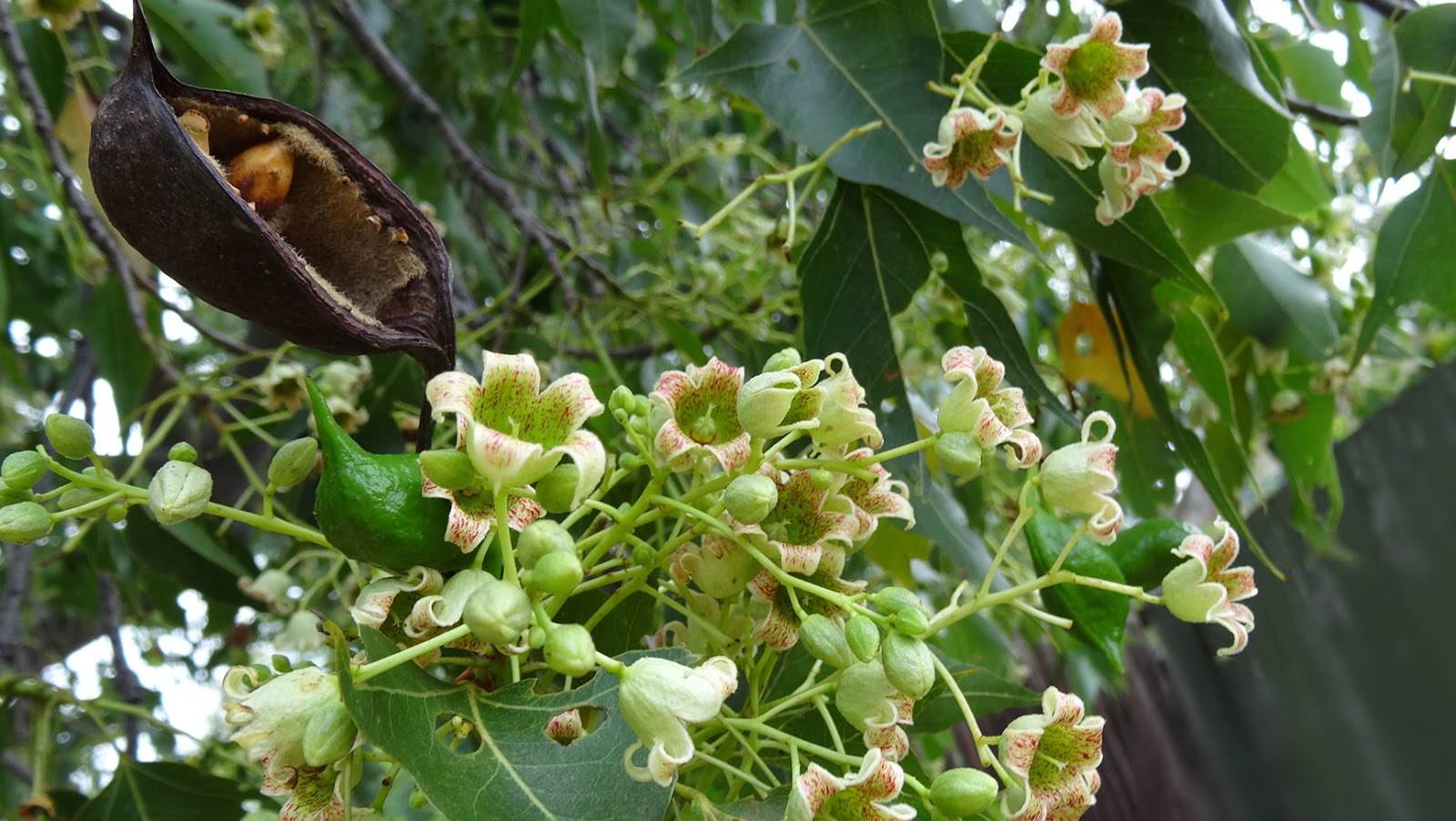The Kurrajong (Brachychiton populneus) is a small to medium sized tree found naturally in Australia in a diversity of habitats from wetter coastal districts to semi-arid interiors of Victoria, New South Wales and Queensland. The extended trunk is a water storage device for survival in a warm dry climate. The bell-shaped flowers are variable in colour (pale green to pink) while the leaves vary considerably in shape. The leaves are either simple and pointed, or may be 3 - 9 lobed. Saplings grow from a drought and fire resistant tap-rooted tuber.
Kurrajong has multiple uses. Seeds are eaten by Aboriginal people after roasting. The soft spongy wood was used for making shields, and the bark as a fibre. The leaves are also used as emergency fodder for drought-affected animal stock.
It has been introduced as an ornamental tree to south-western Australia, South Africa, Louisiana, California, Arizona and Mediterranean countries. In Western Australia it was observed to be invasive in disturbed areas.
Horticulturists have hybridised the Kurrajong with related Brachychiton species, including the Queensland bottle tree (B. rupestris) and Illawarra Flame Tree (B. acerifolius) to produce new garden ornamentals.
The specific name populneus pertains to a perceived similarity to genus Populus, the Poplars. Sometimes B. populneus is also known by the names "lacebark kurrajong" and "bottle tree" (USA). However, B.discolor is also referred to as the Lacebark Kurrajong, and Bottle Tree is a term commonly applied not only to other species of Brachychiton but to members of other genera around the world.
This post is part of the Floral Friday Fotos meme.










Beautiful flowers.
ReplyDeleteNice blooms.
ReplyDeleteVery nice shots
ReplyDelete